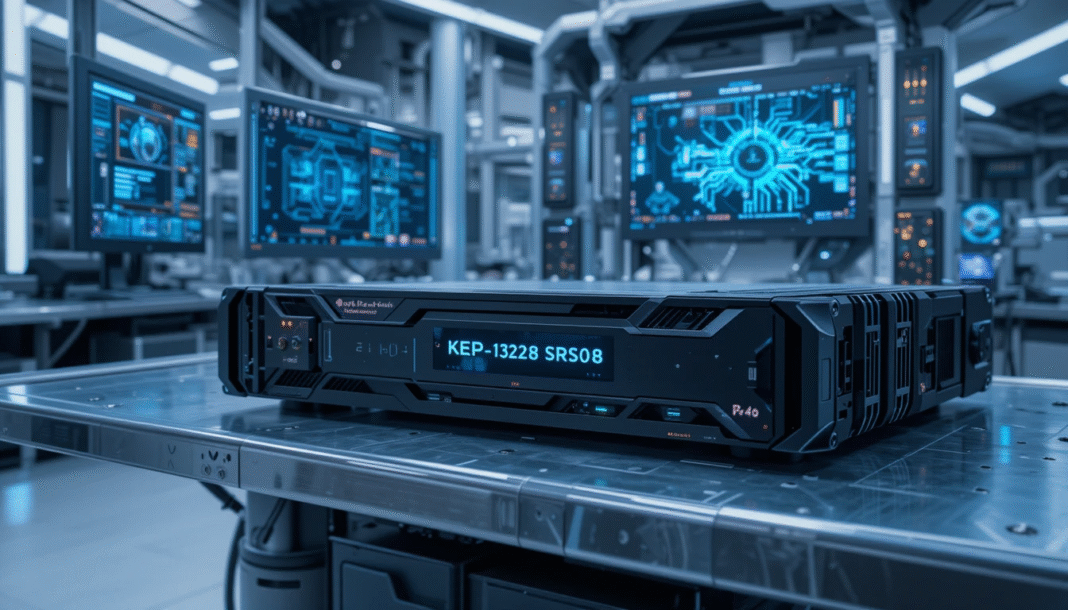Introduction to KEP-13228SRS08
Welcome to the future of smart engineering! Meet KEP-13228SRS08, a groundbreaking innovation that’s set to revolutionize how we approach design and development in diverse industries. Whether you’re an engineer looking for cutting-edge solutions or a business owner wanting to enhance operational efficiency, this game-changing technology is about to change the landscape. As we dive deeper into what makes KEP-13228SRS08 stand out, prepare yourself for insights that could redefine your understanding of engineering possibilities. Let’s unravel its features, applications, and potential impact together!
The Features and Capabilities of KEP-13228SRS08
The KEP-13228SRS08 stands out with its cutting-edge technology designed for smart engineering. Its advanced sensors allow real-time data collection, ensuring precision in various applications.
One of the key features is its compatibility with multiple platforms. This versatility enables seamless integration into existing systems without significant modifications.
Moreover, the device boasts impressive processing power. It can handle complex algorithms effortlessly, making it ideal for predictive analysis and decision-making processes.
Another notable capability is its energy efficiency. The KEP-13228SRS08 minimizes operational costs while maximizing output, crucial for today’s eco-conscious industry standards.
Users will also appreciate the intuitive user interface. This feature simplifies navigation and enhances user experience, even for those less tech-savvy.
The modular design allows easy upgrades as technology evolves, securing long-term investment value for users embracing innovation in their engineering projects.
Applications of KEP-13228SRS08 in Various Industries
The KEP-13228SRS08 is making waves across multiple sectors. Its versatility stands out in manufacturing, where precise data collection enhances efficiency and reduces waste.
In the automotive industry, this technology streamlines assembly lines through real-time monitoring of production processes. As a result, it minimizes errors and boosts output quality.
Healthcare also benefits from KEP-13228SRS08. It optimizes equipment performance by providing vital insights into machinery health, ensuring reliable operation in critical situations.
Energy management sees innovation too. The device aids in predictive maintenance for power plants, allowing operators to address issues before they escalate.
Even agriculture isn’t left behind; farmers utilize its capabilities for smart irrigation systems that conserve water while maximizing crop yields. Each application highlights the transformative potential of KEP-13228SRS08 across diverse fields.
Advantages and Potential Impact on the Engineering Field
The KEP-13228SRS08 brings a transformative shift to the engineering landscape. Its advanced algorithms and smart technology enhance precision, empowering engineers to make data-driven decisions effortlessly.
With its ability to integrate seamlessly into existing processes, this innovative tool minimizes downtime and boosts productivity. The intuitive interface facilitates quick adaptation, allowing teams to harness its capabilities without extensive training.
Moreover, the enhanced collaboration features enable real-time communication among team members across various locations. This fosters innovation and accelerates project development timelines.
Additionally, KEP-13228SRS08 promotes sustainability in engineering practices by optimizing resource use and reducing waste. Its impact on efficiency not only benefits companies financially but also aligns with global efforts toward environmental responsibility.
As industries embrace this cutting-edge solution, we can expect a ripple effect that elevates standards of quality and performance across various sectors within the engineering field.
Challenges and Limitations
Despite its impressive features, KEP-13228SRS08 faces several challenges. One significant limitation is the initial investment cost. For many organizations, adopting this technology may require a substantial upfront expenditure.
Integration with existing systems can also pose difficulties. Businesses often struggle to seamlessly incorporate new tools into their established workflows. Compatibility issues may arise, slowing down productivity during the transition phase.
Moreover, there’s a learning curve associated with mastering KEP-13228SRS08’s functionalities. Employees need adequate training to utilize its capabilities effectively. Without proper support and resources, users might feel overwhelmed or frustrated.
Cybersecurity concerns cannot be overlooked. As smart technologies become more interconnected, they present potential vulnerabilities that could be exploited by malicious actors. Ensuring robust security measures is crucial for mitigating these risks while leveraging innovative solutions like KEP-13228SRS08.
Case Studies: Real-world Examples of KEP-13228SRS08 in Action
The KEP-13228SRS08 is making waves in the automotive industry. A leading manufacturer integrated this technology into their production line, dramatically improving efficiency. They reported a 30% reduction in assembly time while maintaining high-quality standards.
In healthcare, a medical device company utilized KEP-13228SRS08 to enhance diagnostic equipment. This integration allowed for real-time data analytics, leading to faster patient diagnosis and treatment plans.
Another fascinating example comes from renewable energy. A wind farm operator implemented KEP-13228SRS08 for predictive maintenance of turbines. By analyzing performance data, they reduced downtime by 25%, maximizing energy output.
These case studies illustrate the versatility of KEP-13228SRS08 across different sectors. Each scenario highlights its potential to streamline processes and improve outcomes significantly. The impact is clear: industries are adapting swiftly to harness its capabilities effectively.
Future Developments and Possibilities for KEP-13228SRS08
As we look ahead, the future developments surrounding KEP-13228SRS08 are set to redefine how engineering processes unfold. The potential for integrating artificial intelligence and machine learning into its framework could enhance decision-making capabilities further. Imagine a scenario where KEP-13228SRS08 not only analyzes data but predicts trends based on historical patterns.
Moreover, advancements in connectivity may allow KEP-13228SRS08 to interact seamlessly with other smart devices and networks. This interconnectedness could lead to more cohesive project management systems that optimize resources and reduce costs significantly.
We can also expect improvements in user interface design, making it even easier for engineers from various backgrounds to utilize the platform effectively. Enhanced customization features may become available as well, allowing organizations to tailor functionalities according to specific industry needs.
As research continues, collaborations between tech developers and engineering firms will likely yield innovative applications of KEP-13228SRS08 across diverse sectors like renewable energy, aerospace, and infrastructure development.
The possibilities seem endless as this technology evolves alongside emerging industries. Keeping an eye on these trends is crucial for stakeholders looking to stay competitive in an ever-changing landscape.

















